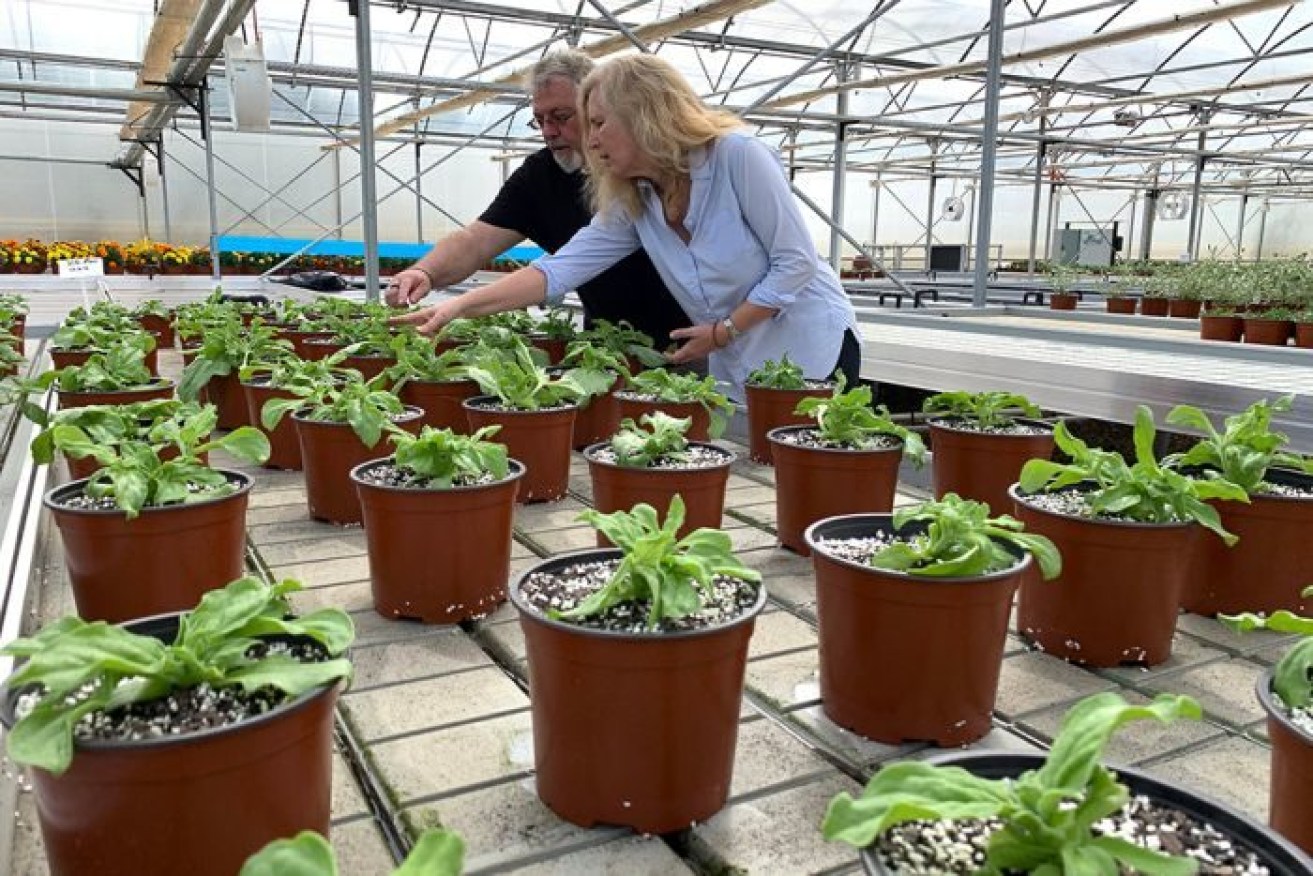Demand for native foods pushes foraging trend to greenhouse cultivation

There is a growing appetite for bush foods in Australia and around the world. Photo: Kim Honan
Thousands of pots of living microgreens line the benches of the greenhouses at a Burringbar property in northern New South Wales.
Iain and Mandy Reynolds, who also grow edible flowers at Pocket Herbs & Produce, have recently added bush foods to their range of hydroponic produce.
They are tapping into the growing demand for native foods by chefs, here and overseas, who are keen to use ingredients that are innovative and different.
The trend of chefs foraging for these ingredients in the wild was shifting towards cultivation of bush foods – for a number of reasons.
Mr Reynolds said not only was foraging unsustainable, it did not guarantee chefs a consistent supply.
“We cannot control everything obviously, but we can ameliorate the worst of the weather … we can heat in the night and we can add some ventilation.”
Some of the bush foods starting to line his greenhouse benches – and increasingly in demand by the industry – included saltbush, pigface, warrigal greens and samphire.
“We’ve chosen these because of the halophyte aspect to it and the fact we believe we can introduce the saline into our system and get the plants to have that saltiness in a sustainable and ongoing manner,” he said.
Mr Reynolds said they planned to increase the number of species they grow, fill the 66 benches in one greenhouse with different bush foods and expand its small customer base.
“We’ll fresh cut and then put into a small punnet and then the punnets will go off to a wholesaler, who’ll supply to the restaurant,” he said.
Once in the kitchen the chefs can use the Indigenous ingredients in a multitude of ways.
“Some stuff is fried, some stuff is boiled, other stuff is more of a garnish and other things won’t be used in great quantities but will be used to give emphasis to a certain taste.”
Mr Reynolds said another benefit of hydroponically grown food over foraged ingredients was the food safety guarantee.
“In a Freshcare and HACCP-approved facility, we have management plans and procedures in place which can assure the safety of what we’re growing,” he said.
What is the nutritional content of bush foods?
Pocket Herbs & Produce has teamed up with Southern Cross Plant Science, based at Southern Cross University (SCU) in Lismore, to investigate the nutritional content of bush foods.
The hydroponic producer has jointly funded the one-year $90,000 study into up to 20 varieties with the federal government through its Entrepreneurs Program.
The bush food trial in the Burringbar greenhouse will also be replicated in the greenhouses at SCU.
Associate Professor Bronwyn Barkla, the director of Southern Cross Plant Science, said their research would start with plants considered to be salt-tolerant.
“These plants are all salt-tolerant but what’s interesting is that they’re all edible and because they’re salt-tolerant they take up a little bit of salt when they grow and that makes them very tasty,” Dr Barkla said.
She said the salt-tolerant plants, known as halophytes, would need to adapt from natural to a greenhouse environment.
“We’re going to look at the macro-nutrients, for instance calcium, potassium, how much sodium is in the plant.
“But we’re also going to look at some of the phytochemical analysis, look at antioxidants and what levels of antioxidants are in the plants, and finally we’re going to look for anti-nutrients so things that might not be ideal to consume.”
One of the main anti-nutrients researchers will be testing for in the halophytes are oxalates.
“Oxalates can build up in the leaves and then when you ingest them, people who have poor kidney function can end up accumulating kidney stones, [when] the oxalates combine with calcium,” Dr Barkla said.
“But this is really not a major concern because a lot of the leafy vegetables that we eat, including spinach and kale, also have oxalates so it’s just limiting your intake of those.
Food forager welcomes cultivation, research
Peter Hardwick from Bangalow in the Byron Shire has been researching wild food and foraging for more than 40 years.
Every month he takes some of Australia’s top chefs foraging as part of the Harvest Cafe’s Wild Harvest Chefs Series in nearby Newrybar.
As demand for native foods has grown, chefs have started to source supply from growers like Pocket Herbs & Produce.
Mr Hardwick said there was a risk of over-foraging and the resource needed to be used sustainably.
“Having the pleasure to actually see these wild plants going from being something obscure to being something that’s available to everybody, that is a real buzz actually.”
The wild food expert has collected cuttings from along the eastern seaboard for use in the Southern Cross Plant Science-led greenhouse trial and was excited by the research.
“So there’s definitely therapeutic properties in these plants and there even seems to be a lot of native ingredients getting used in skincare products, so I wouldn’t be surprised if we see some getting used there.”
As the trend moved away from foraging, Mr Hardwick was not overly concerned his profession was at risk.
“There will still be a need for some foraged ingredients, but I might be doing myself out of a job,” he laughed.
“One of the complaints that the chefs had was that it wasn’t salty enough and so this is what we’re doing with this trial – we’re making sure that the salt is in the irrigation water, so we are responding to that perception.

















